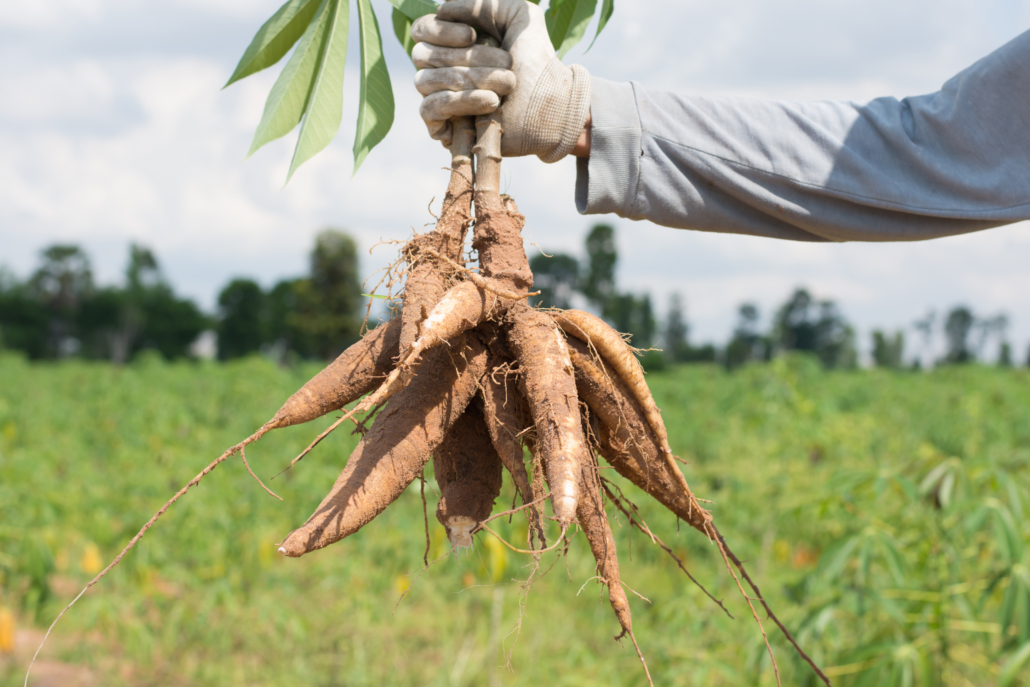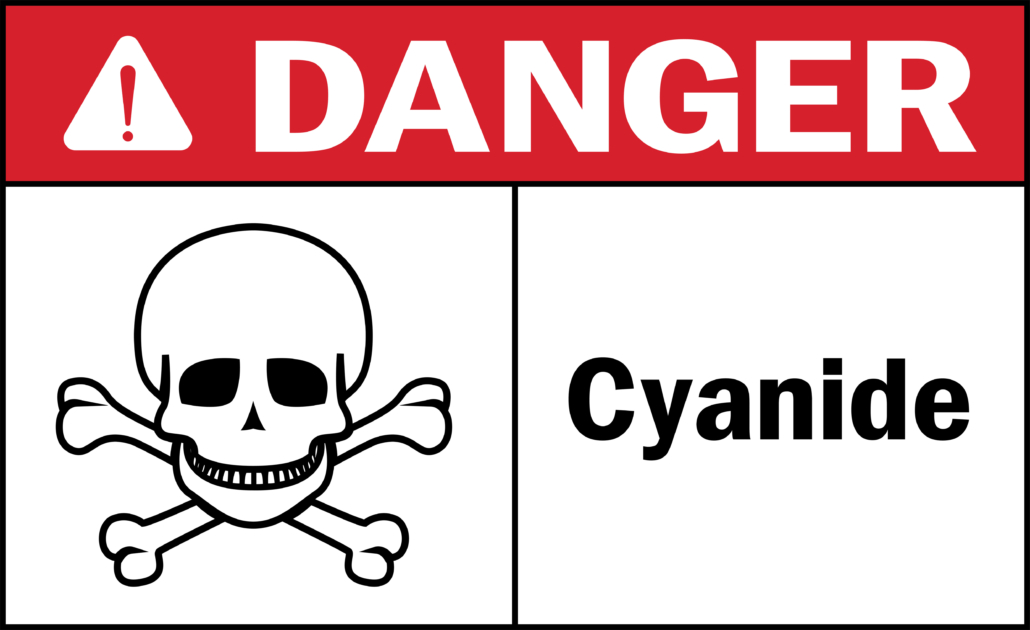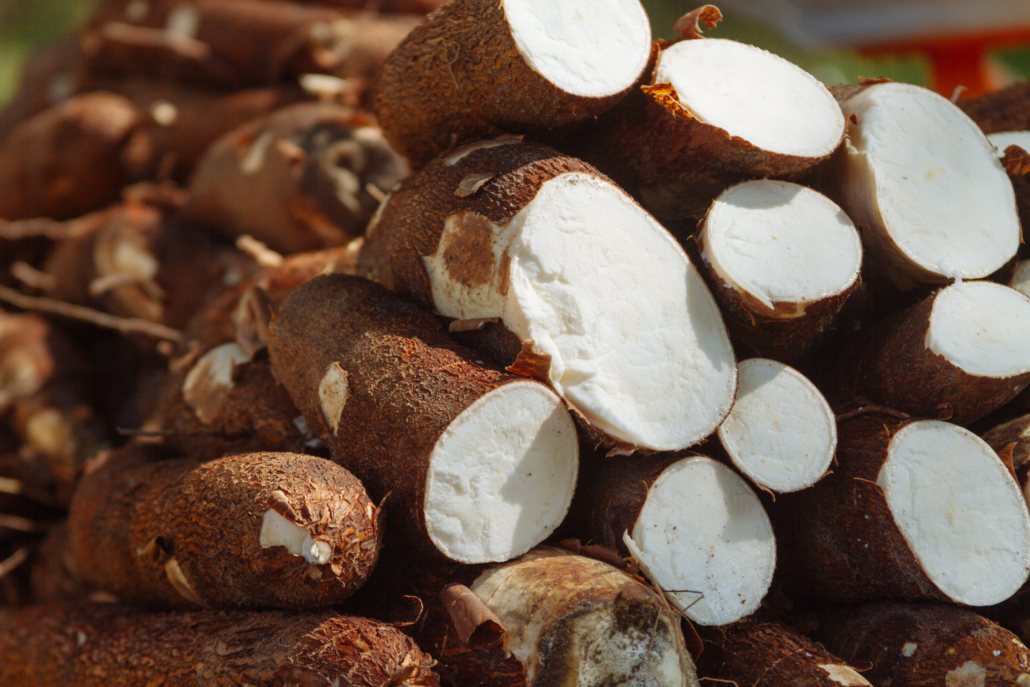We include products in articles we think are useful for our readers. If you buy products or services through links on our website, we may earn a small commission.
Cyanogenic Glycosides: What You Need to Know about this Plant Toxin

Most people think of plants as benevolent health foods. But the truth is that plants are living organisms that want nothing more than to survive and proliferate. Since plants can’t run, strike, scratch, or bite, they have evolved complex chemical defenses. Cyanogenic glycosides are one of these naturally occurring toxins that protect plants against predators, including us humans.
When consumed, cyanogenic glycosides can become cyanide in the human body. Cyanide exposure can lead to chronic and acute poisoning, growth retardation, and neurological disorders.
In this article, we’ll explore this natural mechanism of biological warfare and its health consequences for those who dare to indulge in them.
Table of Contents
What are Cyanogenic Glycosides
Cyanogenic glycosides (CG) are a class of phytotoxins, which are naturally occurring pesticides. CGs are found in over 2,000 species of plants, many of which are common staple foods such as cassava, sorghum, stone fruits (peaches, cherries, etc.), bamboo, and almonds.
When humans consume foods high in cyanogenic glycosides, they degrade into a highly toxic compound called hydrogen cyanide (HCN).
The human body can process and expel low levels of cyanide, but higher doses can block cellular respiration, suffocate mitochondria, and even be fatal. While chronic exposure to low levels of cyanide can result in cumulative nerve and tissue damage
The detrimental effects of cyanogenic glycosides are most common in poorer tropical countries where crops like cassava and bamboo are less likely to be correctly processed. Exposure to plant cyanide combined with nutrient-deficient diets results in widespread neurological diseases like konzo and other conditions that cause paralysis.
Detrimental Effects from Cyanogenic Glycosides

The effects of consuming plants containing cyanogenic glycosides can be detrimental. Here’s a rundown of what can happen and why.
Cyanide Poisoning
Cyanogenic glycosides can become hydrogen cyanide (HCN) when combined with digestive enzymes such as beta-glucosidase. Cyanide interferes with cellular respiration. This means that it prevents cells from using oxygen, leading to serious health issues, including rapid respiration and, ultimately, respiratory failure.
Acute Toxicity
Ingesting high amounts of foods containing cyanogenic glycosides can lead to acute cyanide poisoning.
Symptoms of acute toxicity may include
- Headache
- Dizziness
- Drop in blood pressure
- Nausea
- Vomiting
- Abdominal pain
- Diarrhea
- Twitching
- Convulsions
- Loss of consciousness
- Terminal coma
Chronic Cyongenic Glycoside Exposure
Repeated exposure to lower levels of CG from regularly consuming plant foods with cyanogenic glycosides may have cumulative toxic effects.
Chronic CG exposure is linked to various health issues, including
- Neurological disorders
- Malnutrition
- Developmental malformations
- Goiter
- Swollen thyroid glands
These issues are recorded in communities in Africa where CG intake was greater than 10–50 mg/kg food.
CG Toxicity is Variable
Different plant species have different levels of CG. Even within species, different varieties can be more or less toxic, making it difficult to know what foods are safe, especially for vulnerable populations.
Other factors like the maturity of the plants, processing, and cooking methods have a significant influence on CG levels and the potential for toxic exposure.
It can be difficult to identify warning signs, leading to the potential for serious long-term effects and systemic disorders.
Vulnerable Populations
Certain populations are at greater risk of CG toxicity. Infants and children, people with genetic conditions, and people with digestive problems are at greater risk of experiencing uncomfortable and severe symptoms.
However, it’s important to note that the concentration of cyanogenic glycosides varies among different plant parts and varieties, and proper processing (such as cooking) can reduce cyanide content. Consuming large amounts of these compounds without proper preparation can be toxic.
Foods High in Cyanogenic Glycosides

Some common plant foods that contain cyanogenic glycosides include:
Cassava (Manihot esculenta): Also called manioc and yucca. Cassava is a staple food in many tropical countries. Cassava roots contain relatively high levels of cyanogenic glycosides. Even with processing methods, like peeling, soaking, and thorough cooking, cassava can still expose people to CG in potentially harmful levels.
This is of some concern in the U.S. and Western countries, where cassava flour is becoming a popular gluten-free flour alternative.
If you do use cassava flour, be sure to cook it thoroughly. And look for assurances that it has been properly processed. This entails soaking cassava roots in water for several days. Roasting the roots or drying the roots in the sun. Removing the skin, and grinding the roots into flour. If these steps are not properly taken, CG levels can remain dangerously high.
| Portion of the root | Weight | Potential Cyanide (CN−p) |
| % | mg/kg | |
| Root | 100.00 | 32.18 |
| Cortex | 14.0 | 156.16 |
| Reserve Parenchyma or Pulp | 85.0 | 6.12 |
Source: https://www.sciencedirect.com/science/article/abs/pii/B9780323900577000140
Bitter Almonds (Prunus dulcis): Bitter almonds contain a type of cyanogenic glycoside called amygdalin. This is not the case for sweet almonds, the type most people are familiar with.
Sorghum: Sorghum is a grain that comes in many varieties, some of which have high levels of cyanogenic glycosides. Like cassava, sorghum must be properly processed, often through fermentation and thorough cooking to reduce the risks of CG exposure.
Lima Beans and flaxseed are other common food crops that require proper processing to remove cyanogenic glycosides.
Cyanogenic Glycosides: The Bottom Line
Cyanogenic glycosides are a naturally occurring plant toxin. These compounds protect plants from pathogens and predators.
When humans ingest plants containing cyanogenic glycosides, the compound is metabolized into hydrogen cyanide–a potent toxin that interferes with cellular respiration and damages body tissue.
Both acute exposure to high amounts of CG and chronic low-grade exposure can result in serious and debilitating symptoms. CG poisoning is most common in developing countries where cassava, bamboo shoots, and sorghum are stable foods, and there is less knowledge and oversight of safe processing methods such as soaking, drying, and fermenting.




















